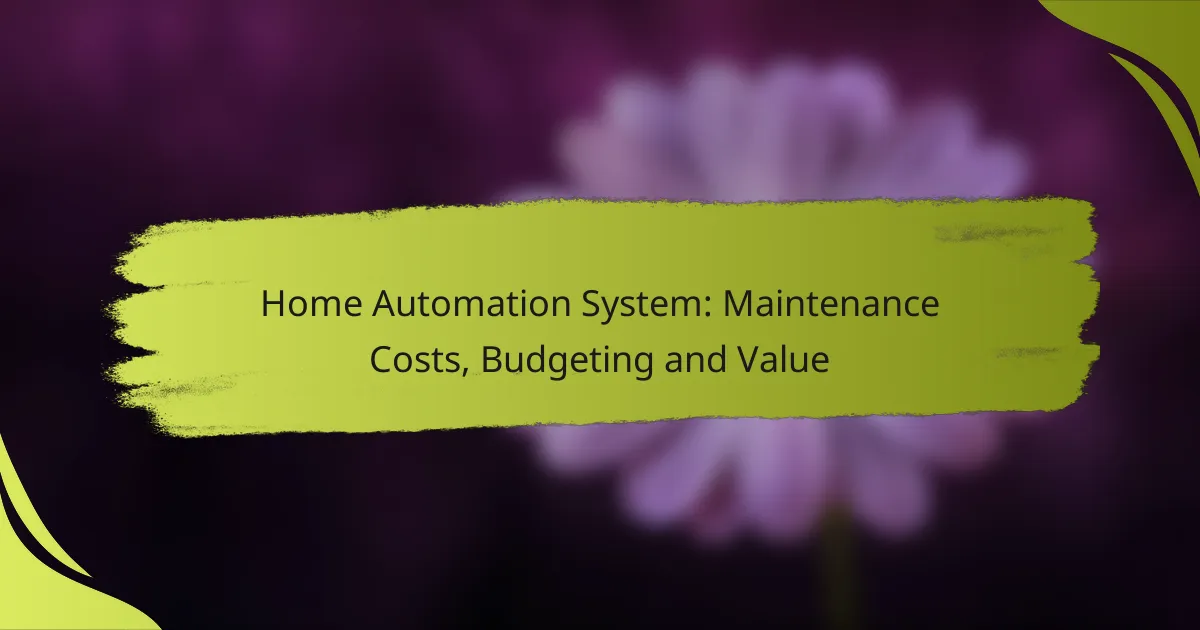Home automation systems offer enhanced functionality and security for homeowners, but understanding the maintenance costs is crucial for effective budgeting. These costs can vary significantly based on system complexity and device quantity, typically ranging from a few thousand to tens of thousands of Indian Rupees annually. Proper budgeting for maintenance ensures efficient operation and can prevent costly repairs, ultimately extending the lifespan of your smart devices.
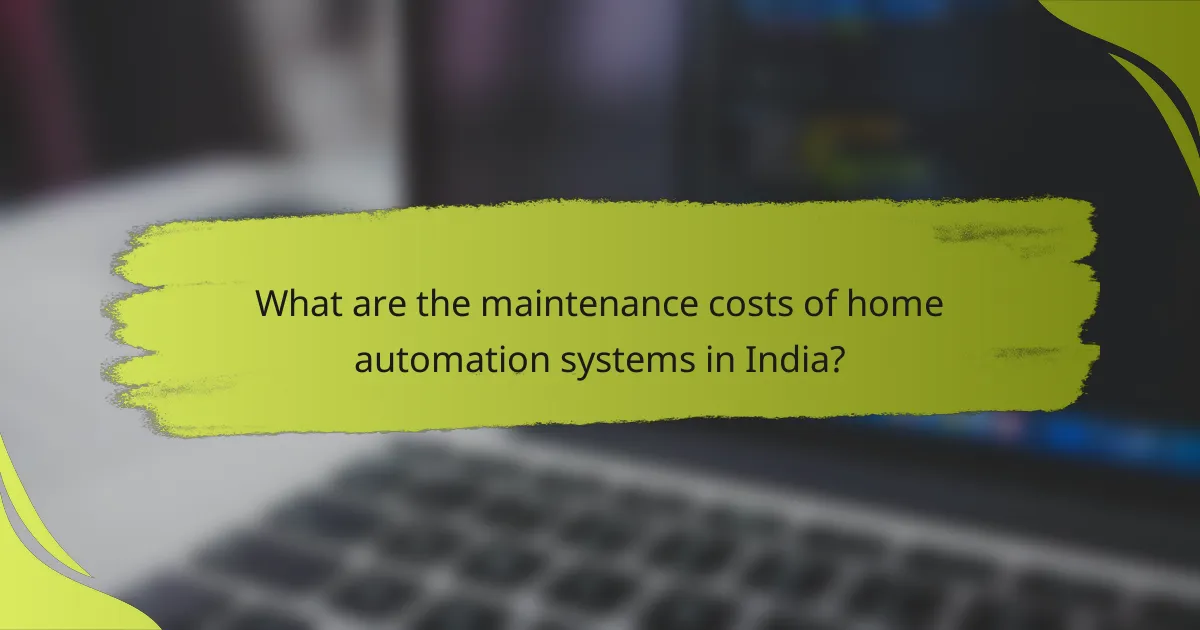
What are the maintenance costs of home automation systems in India?
The maintenance costs of home automation systems in India can vary widely, typically ranging from a few thousand to tens of thousands of Indian Rupees annually. These costs depend on the complexity of the system, the number of devices, and the level of service required.
Average annual maintenance costs
On average, homeowners can expect to spend between INR 5,000 to INR 20,000 per year on maintenance for a standard home automation system. This includes routine check-ups, software updates, and minor repairs. For more advanced systems with extensive features, costs can rise significantly, potentially reaching INR 30,000 or more annually.
Factors affecting maintenance costs
Several factors influence the maintenance costs of home automation systems. The complexity of the system, including the number of integrated devices and the technology used, plays a crucial role. Systems that require specialized knowledge or proprietary components may incur higher maintenance fees.
Additionally, the frequency of use and the environment in which the system operates can affect wear and tear. Systems exposed to extreme weather conditions or heavy usage may require more frequent servicing, thus increasing overall costs.
Common repair expenses
Common repair expenses for home automation systems can include replacing faulty sensors, fixing connectivity issues, or updating software. Typical costs for sensor replacements can range from INR 1,000 to INR 5,000 per unit, depending on the brand and technology.
Connectivity issues may require professional troubleshooting, which can cost between INR 1,500 to INR 3,000. Regular software updates or security patches may also incur nominal fees, but many systems offer these as part of a maintenance package.
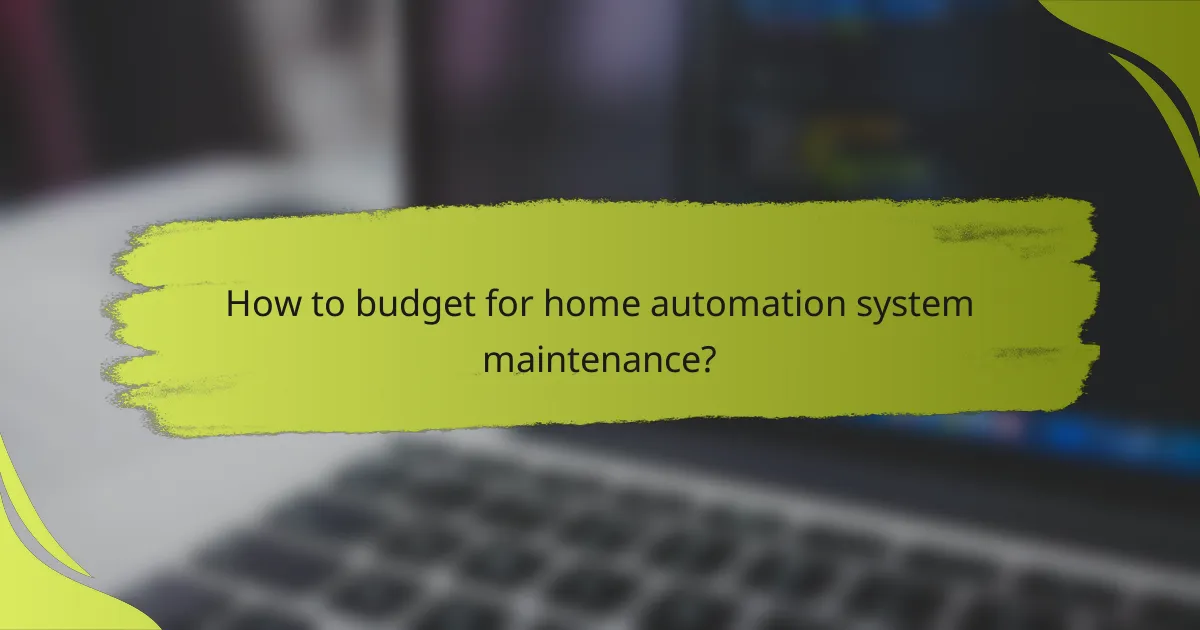
How to budget for home automation system maintenance?
Budgeting for home automation system maintenance involves estimating ongoing costs to ensure your system operates efficiently. Regular maintenance can help prevent expensive repairs and extend the lifespan of your devices.
Creating a maintenance budget
To create a maintenance budget for your home automation system, start by identifying all components that require upkeep, such as smart thermostats, security cameras, and lighting systems. Estimate annual costs for software updates, hardware replacements, and professional servicing, which can typically range from a few hundred to over a thousand dollars, depending on the complexity of your system.
Consider setting aside a percentage of your initial investment each year, often around 5-10%, to cover these maintenance expenses. This proactive approach helps avoid financial strain when unexpected repairs arise.
Cost-saving tips for maintenance
To save on maintenance costs, perform regular checks and minor repairs yourself, such as updating software or replacing batteries in devices. Familiarize yourself with your system’s user manual to troubleshoot common issues without needing professional help.
Additionally, consider bundling services with a single provider for discounts or exploring warranty options that cover maintenance costs. Look for seasonal promotions or loyalty programs that can further reduce expenses. Always compare service providers to ensure you receive the best value for your maintenance needs.
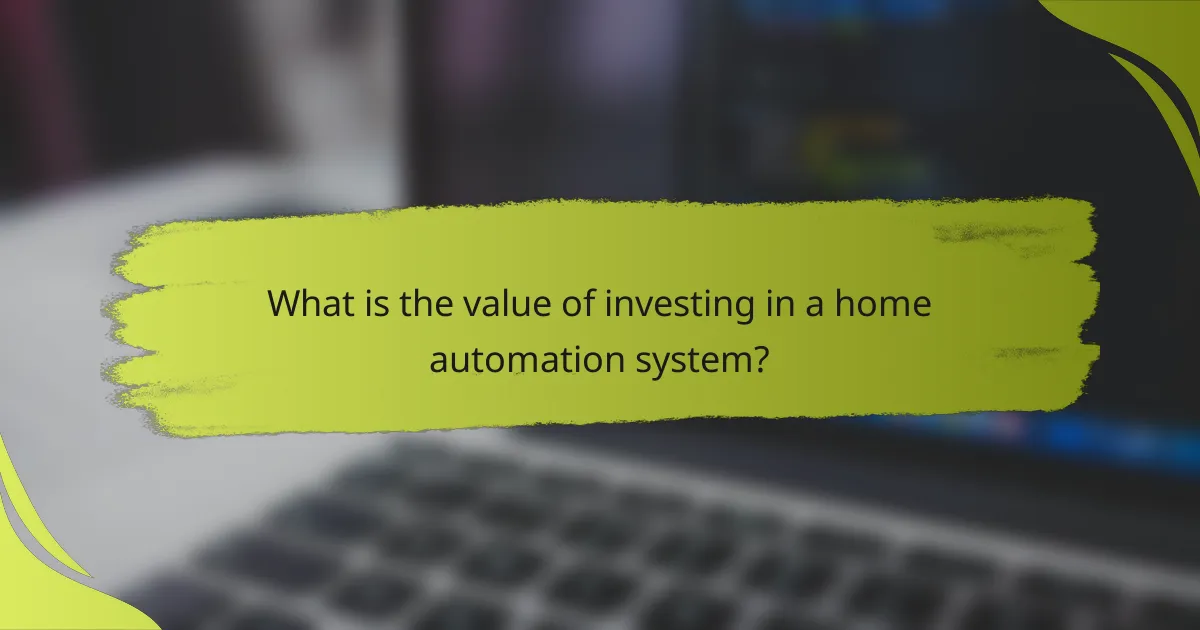
What is the value of investing in a home automation system?
Investing in a home automation system can significantly enhance your property’s functionality, security, and overall value. By integrating smart technology, homeowners can enjoy greater convenience, energy efficiency, and potential savings over time.
Increased property value
A home automation system can boost your property’s market value, making it more attractive to potential buyers. Homes equipped with smart technology often sell faster and at higher prices compared to traditional homes.
According to real estate experts, a well-integrated home automation system can increase property values by a range of 3% to 5%. Features like smart lighting, security systems, and climate control appeal to modern buyers looking for convenience and energy efficiency.
Energy savings and efficiency
Home automation systems can lead to significant energy savings by optimizing energy usage. Smart thermostats, for instance, can adjust heating and cooling based on your habits, potentially reducing energy bills by 10% to 20%.
Additionally, automated lighting systems can ensure that lights are only on when needed, further decreasing electricity costs. Homeowners should consider the initial investment against the long-term savings, as many systems pay for themselves within a few years.
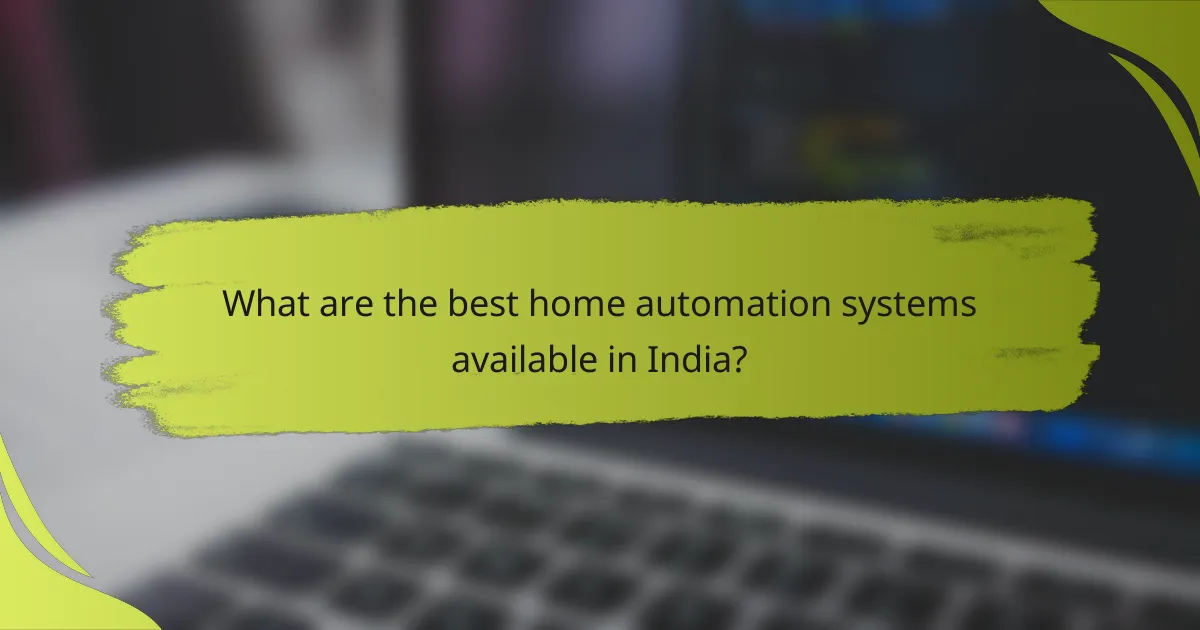
What are the best home automation systems available in India?
The best home automation systems in India combine user-friendly interfaces, robust features, and compatibility with various devices. Popular options include systems that offer seamless integration with smart devices, security features, and energy management capabilities.
Top-rated systems in 2023
In 2023, some of the top-rated home automation systems in India include Google Nest, Amazon Alexa, and Xiaomi Mi Home. These systems are praised for their ease of use, extensive device compatibility, and strong community support.
Google Nest provides a comprehensive ecosystem that integrates smart speakers, displays, and security cameras, while Amazon Alexa excels in voice control and smart home device management. Xiaomi Mi Home is known for its affordability and a wide range of compatible devices.
Comparison of popular brands
When comparing popular brands, consider factors such as compatibility, user interface, and price. Google Nest and Amazon Alexa generally offer more advanced features but at a higher price point, while Xiaomi Mi Home is budget-friendly but may have limited compatibility with some devices.
For instance, Google Nest products typically range from INR 4,000 to INR 25,000, while Amazon Alexa devices can vary from INR 3,000 to INR 20,000. Xiaomi products often start around INR 1,500, making them accessible for those on a tighter budget.
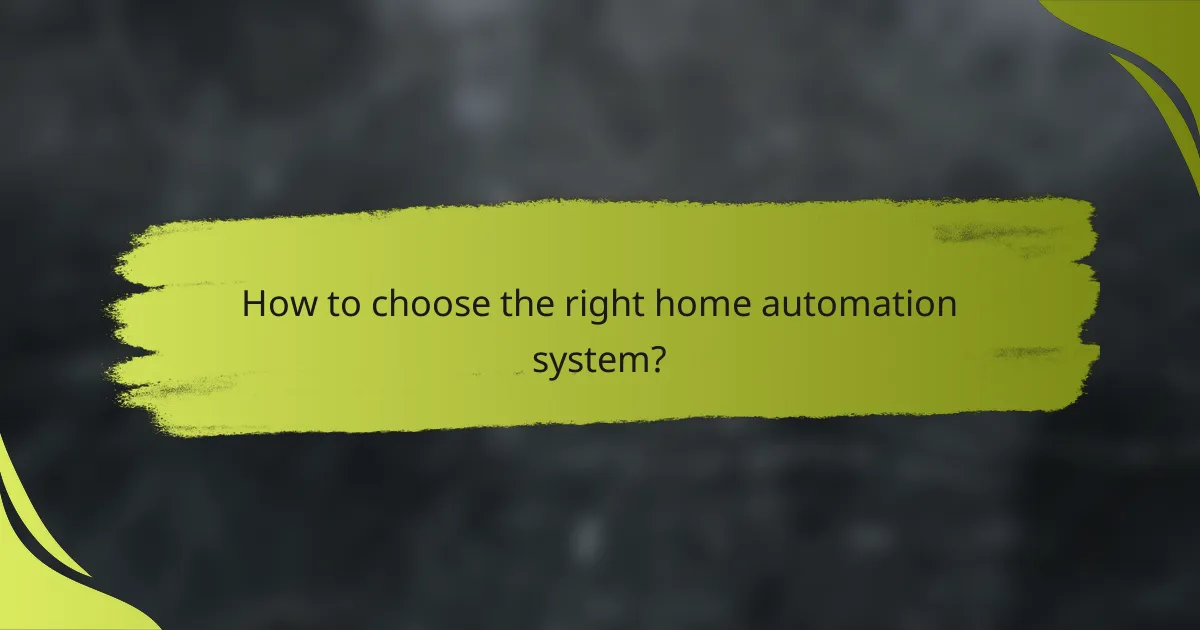
How to choose the right home automation system?
Choosing the right home automation system involves assessing your specific needs, budget, and the features that will enhance your daily life. Consider factors such as ease of use, scalability, and compatibility with existing devices to ensure a seamless integration.
Key features to consider
When selecting a home automation system, prioritize features like remote access, voice control, and compatibility with smart devices. Look for systems that offer security features, such as surveillance cameras and alarm systems, as well as energy management tools to monitor and reduce utility costs.
Another important aspect is the user interface; a system should be intuitive and easy to navigate. Additionally, consider whether the system supports automation routines, allowing you to schedule tasks or create scenarios that enhance convenience and efficiency.
Evaluating compatibility with existing systems
Before committing to a home automation system, evaluate how well it integrates with your current devices and platforms. Check if the system supports popular protocols like Zigbee, Z-Wave, or Wi-Fi, which can influence compatibility with smart bulbs, thermostats, and locks.
It’s also wise to review the manufacturer’s documentation and user reviews to identify any known compatibility issues. Ensuring that your new system can work alongside existing technology will save you from potential headaches and additional costs down the line.
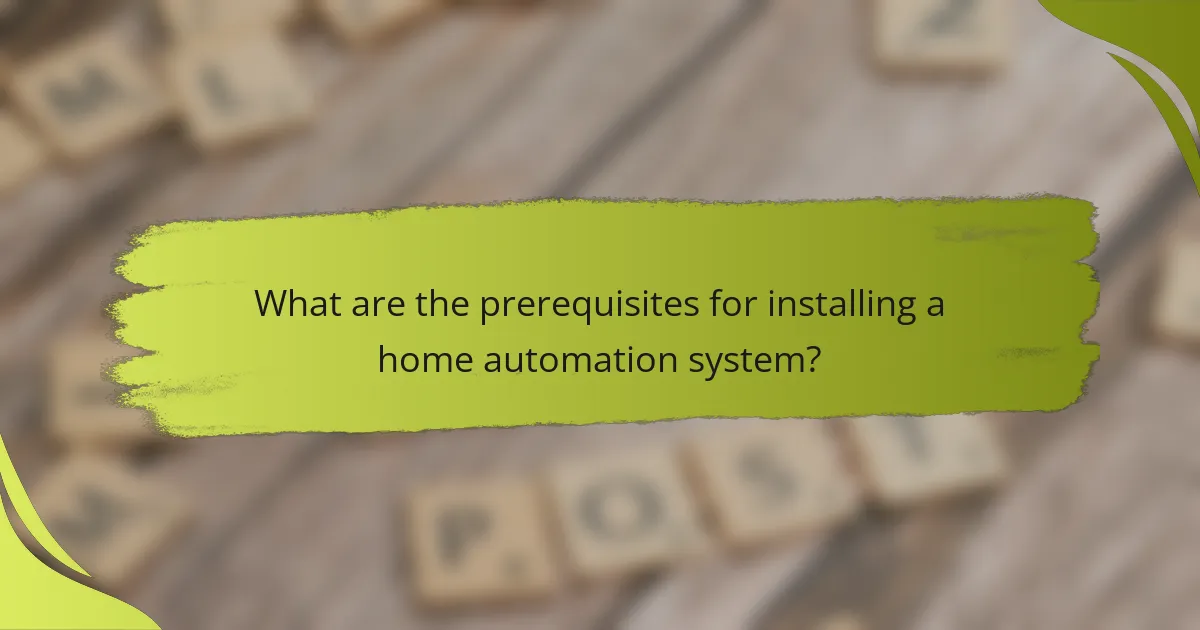
What are the prerequisites for installing a home automation system?
To successfully install a home automation system, you need to consider technical requirements and the existing space and infrastructure. Understanding these prerequisites will help ensure a smooth installation process and optimal functionality.
Technical requirements
Home automation systems typically require a reliable internet connection, compatible devices, and a central hub or controller. Most systems operate over Wi-Fi, so having a strong signal throughout your home is crucial.
Additionally, check the compatibility of your existing devices with the automation system you plan to install. Many systems support various protocols like Zigbee or Z-Wave, which can influence your choice of devices.
Space and infrastructure considerations
Evaluate your home’s layout to determine where devices will be installed. Consider factors such as the location of power outlets, Wi-Fi coverage, and the physical space for devices like cameras or sensors.
It’s also important to think about your home’s electrical system. Ensure that it can support additional devices without overloading circuits. If necessary, consult a professional electrician to assess your setup.
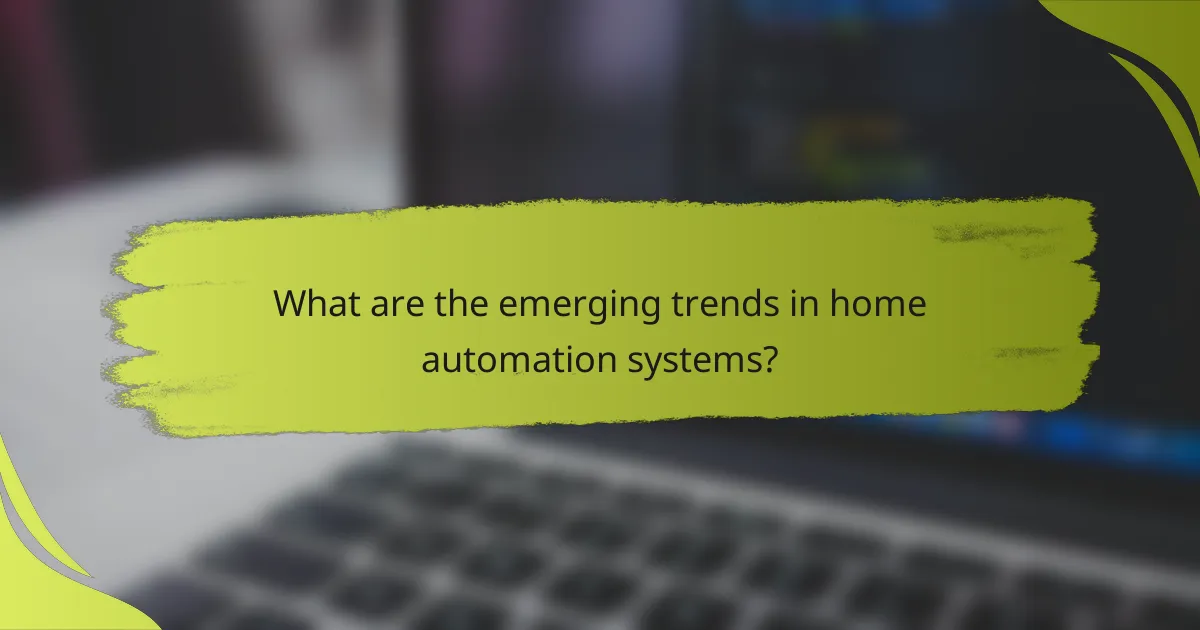
What are the emerging trends in home automation systems?
Emerging trends in home automation systems focus on enhanced integration, improved security, and increased energy efficiency. These advancements are driven by technological innovations, particularly in artificial intelligence and machine learning, which enable smarter, more responsive home environments.
Integration with AI and machine learning
Integration with AI and machine learning allows home automation systems to learn user preferences and adapt accordingly. For example, smart thermostats can analyze patterns in heating and cooling usage to optimize energy consumption, potentially reducing utility bills by a noticeable percentage.
Home automation devices equipped with AI can also provide predictive maintenance alerts, notifying homeowners of potential issues before they escalate. This proactive approach can save on repair costs and extend the lifespan of devices.
Smart home security advancements
Smart home security advancements are making homes safer and more secure. Systems now feature real-time monitoring, facial recognition, and remote access, allowing homeowners to manage their security from anywhere via mobile apps.
Many modern security systems offer integration with other smart devices, such as door locks and cameras, creating a comprehensive security network. Homeowners should consider systems that comply with local regulations and standards to ensure reliability and effectiveness.
